Heard Island and McDonald Islands (Australia): Unveiling Untouched Wilderness
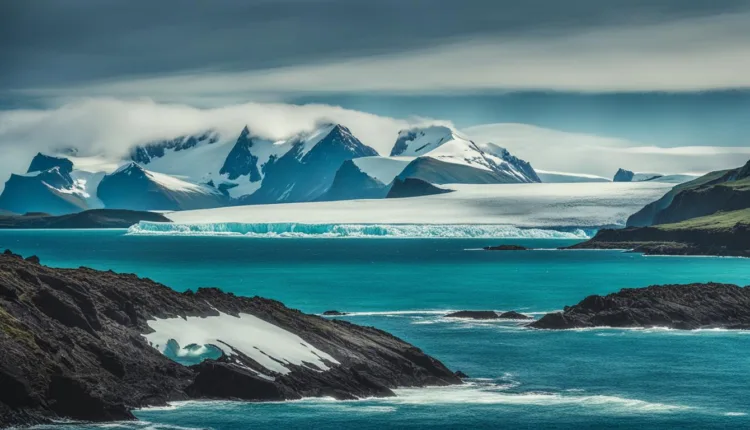
As a passionate traveler and nature enthusiast, I am constantly seeking out hidden gems that offer a truly immersive experience. Recently, I stumbled upon a place that exceeded all my expectations – the Heard Island and McDonald Islands. Nestled in the Southern Indian Ocean, this remote volcanic island group is a Subantarctic Territory and an Australian External Territory.
Imagine a pristine and untouched wilderness where nature reigns supreme. This is what awaits you on Heard Island and McDonald Islands. From breathtaking landscapes to unique flora and fauna, these islands offer a truly unforgettable adventure. Whether you’re an avid hiker, wildlife lover, or simply someone who appreciates the raw beauty of nature, this is a destination that will leave a lasting impression.
Join me as I take you on a virtual journey to discover the hidden treasures of Heard Island and McDonald Islands. From their captivating geography to the volcanic activity that has shaped the land, there is so much to explore and learn. Let’s delve into the unique ecosystem of these islands and uncover the rich human history and conservation efforts that have helped preserve this untouched wilderness.
Key Takeaways:
- Heard Island and McDonald Islands are a remote and untouched wilderness in the Southern Indian Ocean.
- These volcanic islands are classified as a Subantarctic Territory and an Australian External Territory.
- Explore the breathtaking natural beauty and unique flora and fauna of Heard Island and McDonald Islands.
- Learn about the volcanic activity and geological features that shape the landscape of these islands.
- Discover the human history, conservation efforts, and responsible tourism practices in place to preserve this pristine environment.
Exploring the Beauty of Heard Island and McDonald Islands
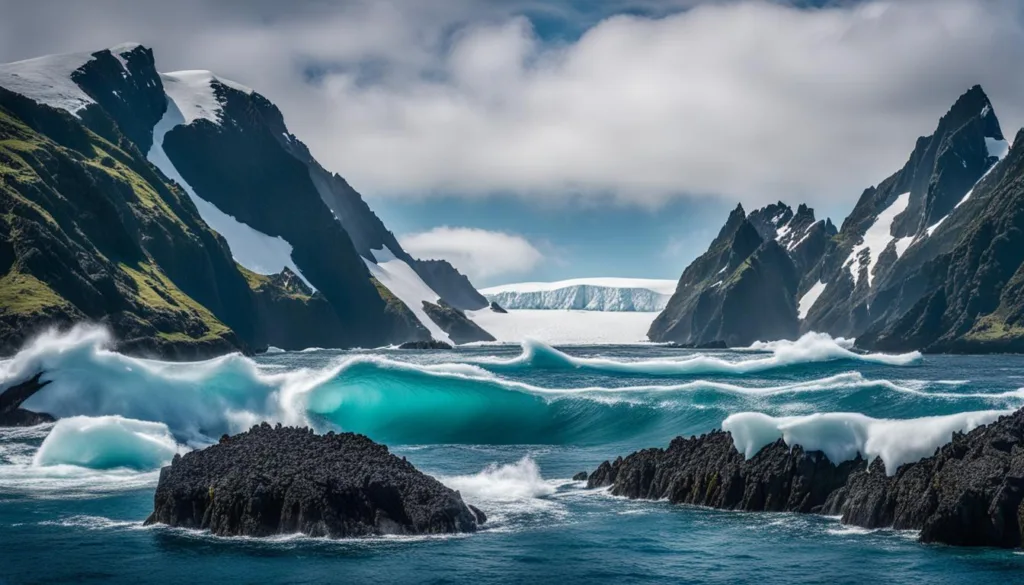
The Heard Island and McDonald Islands, situated in the Southern Indian Ocean, are home to some of the most breathtaking natural beauty and untouched wilderness in the world. These remote volcanic islands offer explorers a chance to immerse themselves in stunning landscapes and experience the raw, pristine environment of this unique destination.
From rugged mountains to icy glaciers, from vibrant coastal ecosystems to expansive tundra, the Heard Island and McDonald Islands showcase a diverse range of landscapes that captivate the senses. Visitors can witness towering cliffs, pristine beaches, and crystal-clear waters teeming with marine life. The untouched wilderness creates an unparalleled sense of tranquility and awe.
Whether you are an outdoor enthusiast, a nature photographer, or simply someone seeking a once-in-a-lifetime adventure, Heard Island and McDonald Islands offer a wealth of opportunities to explore. From hiking along volcanic slopes to wildlife watching, every moment spent on these islands is an opportunity to connect with nature and witness its untouched beauty.
Location and Geography of Heard Island and McDonald Islands
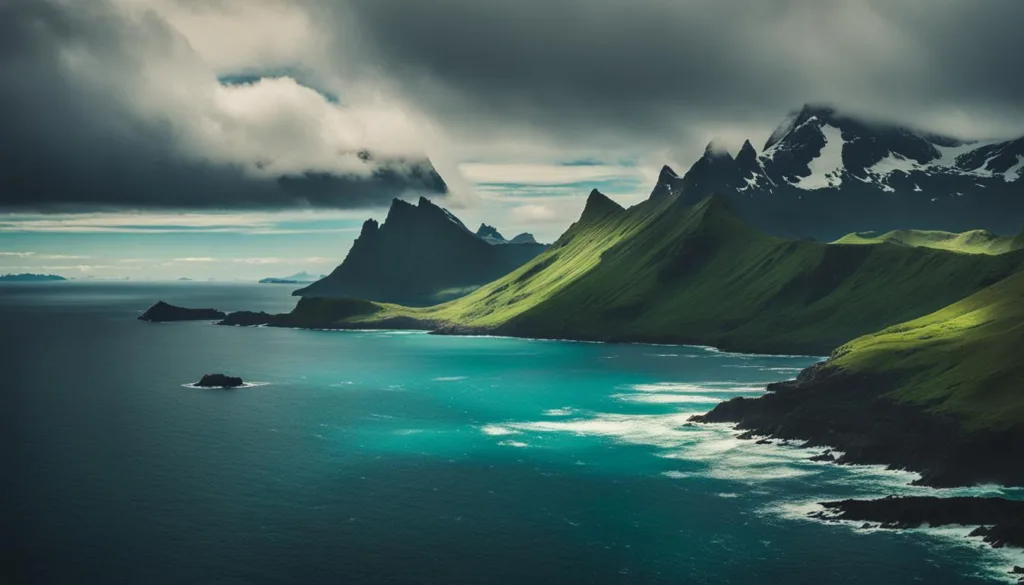
When it comes to remote and untouched wilderness, few places can compare to Heard Island and McDonald Islands. These volcanic islands are located in the Southern Indian Ocean, approximately 4,100 kilometers southwest of Perth, Australia. Situated in the Subantarctic Territory as part of the Australian External Territory, the islands boast a unique geographical setting that contributes to their pristine and isolated environment.
Heard Island, the largest of the two, is characterized by its rugged terrain, towering peaks, and glaciers. It is dominated by the majestic Big Ben, an active volcano and the highest peak in Australian territory. McDonald Islands, on the other hand, are a group of smaller volcanic islets, known for their dramatic coastal cliffs and active volcanic activity.
The islands’ geographical location in the Southern Indian Ocean places them in a region known for its harsh climate and extreme weather conditions. Due to their proximity to the Antarctic Circumpolar Current, the islands experience strong winds, heavy precipitation, and low temperatures throughout the year. The challenging environment, combined with their remote location, contributes to the pristine and untouched nature of Heard Island and McDonald Islands.
The Geographical Features of Heard Island and McDonald Islands
The geographical features of Heard Island and McDonald Islands are truly remarkable. From deep crevasses and razor-thin ridges to vast glaciers and volcanic peaks, these islands offer a diverse and awe-inspiring landscape. The rugged and untouched terrain provides a rare glimpse into the raw power of nature.
| Geographical Features | Description |
|---|---|
| Rugged Peaks | Heard Island is home to Big Ben, an active volcano and the highest peak in Australian territory, standing at 2,745 meters. The island is also dotted with numerous other peaks, some of which are covered in glaciers. |
| Coastal Cliffs | The McDonald Islands are known for their towering coastal cliffs, rising dramatically from the ocean. These cliffs provide nesting sites for various seabirds, including albatrosses and petrels. |
| Glaciers | Heard Island is home to several glaciers, including Gotley Glacier and Stephenson Glacier. These majestic ice formations carve through the landscape, adding to the island’s natural beauty. |
| Volcanic Activity | The islands are characterized by their volcanic activity, with regular eruptions, lava flows, and fumarole activity. This volcanic activity has shaped the landscape, creating unique geological formations. |
Exploring the geographical features of Heard Island and McDonald Islands is an extraordinary experience. It allows visitors to witness the power of nature and gain a deeper appreciation for the untouched wilderness found in this remote corner of the world.
Unique Flora and Fauna of Heard Island and McDonald Islands
The Heard Island and McDonald Islands are not only known for their breathtaking beauty but also for their unique and diverse flora and fauna. These remote islands provide a habitat for a variety of plant and animal species that have adapted to the harsh and isolated environment. Exploring the flora and fauna of Heard Island and McDonald Islands offers visitors a chance to witness the wonders of untouched wilderness.
The plant life on the islands showcases a rich array of endemic species that can only be found in this region. From sturdy tussock grasses to colorful wildflowers, the vegetation thrives in the volcanic soils and challenging conditions. The flora of Heard Island and McDonald Islands plays a crucial role in maintaining the delicate balance of the ecosystems and provides a vital food source for the island’s wildlife.
The islands are also home to unique and fascinating wildlife. Seabirds, such as albatrosses and petrels, nest in the cliffs and roam the skies, while marine mammals, including seals and orcas, inhabit the surrounding waters. Additionally, the islands serve as breeding grounds for various penguin species, including the emperor penguin, which is the tallest and heaviest of all penguin species. The diverse fauna of Heard Island and McDonald Islands presents an extraordinary opportunity for wildlife enthusiasts and photographers seeking to capture the essence of these remote islands.
The Endemic Species of Heard Island and McDonald Islands
| Flora | Common Name | Scientific Name |
|---|---|---|
| Grass | Tussock grass | Poa foliosa |
| Wildflower | Macquarie Island cabbage | Stilbocarpa polaris |
| Moss | Heard Island carpet moss | Andreaea regularis |
| Fauna | Common Name | Scientific Name |
|---|---|---|
| Bird | Heard Island shag | Leucocarbo atriceps |
| Mammal | Heard Island fur seal | Arctocephalus gazella |
| Invertebrate | Heard Island springtail | Antarctophthonius hamatus |
As visitors explore the untouched wilderness of Heard Island and McDonald Islands, they are provided with a rare opportunity to witness the delicate interplay between the unique flora and fauna that call these islands home. It is a testament to the resilience and adaptability of nature in some of the harshest conditions on Earth.
Volcanic Activity and Geological Features
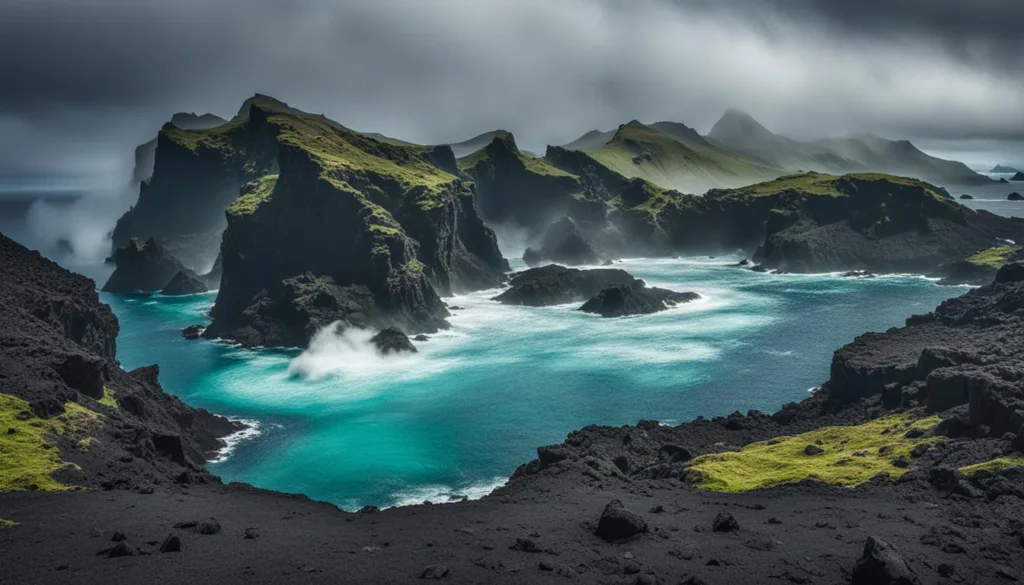
When exploring the Heard Island and McDonald Islands, one cannot ignore the fascinating volcanic activity and unique geological features that shape these remote islands. These volcanic islands have experienced eruptions, lava flows, and fumarole activity, resulting in a distinct and rugged landscape. The volcanic activity has left its mark, creating deep crevasses, razor-thin ridges, and imposing terrains. It is a testament to the powerful forces of nature that have shaped these islands over time.
The geological features of Heard Island and McDonald Islands offer a glimpse into the dynamic and ever-changing nature of our planet. The rugged terrains provide a challenging yet awe-inspiring backdrop for adventurers and researchers alike. The deep crevasses carved by ancient lava flows invite exploration and intrigue, while the razor-thin ridges offer breathtaking views of the surrounding ocean. It is a paradise for geology enthusiasts and nature lovers alike, showcasing the magnificent wonders of our natural world.
Witnessing the volcanic activity and geological features of Heard Island and McDonald Islands is a humbling experience. The raw power of nature is on full display, reminding us of the forces that have shaped our planet for millions of years. It is a testament to the resilience of life, as unique flora and fauna have adapted to thrive in this challenging environment.
Explorers and scientists have been drawn to these islands to study the geological processes at play and unravel the mysteries of their formation. The ever-changing landscape and ongoing volcanic activity provide a constant source of fascination and research opportunities for those seeking to deepen our understanding of Earth’s geological history.
| Volcanic Activity and Geological Features of Heard Island and McDonald Islands | Key Points |
|---|---|
| Volcanic Eruptions | The islands have experienced volcanic eruptions, leaving behind a rugged landscape. |
| Lava Flows | Ancient lava flows have created deep crevasses and shaped the terrain. |
| Fumarole Activity | Active fumaroles on the islands showcase ongoing volcanic processes. |
| Razor-Thin Ridges | These striking features offer breathtaking views of the surrounding ocean. |
| Unique Geological Formations | The islands boast a wide variety of geological formations, showcasing the power of nature. |
The volcanic activity and geological features of Heard Island and McDonald Islands serve as a reminder of the Earth’s ever-changing nature and the processes that shape our planet. Explorers and researchers have the unique opportunity to study and admire these wonders, deepening our understanding of the world we live in.
Human History and Exploration
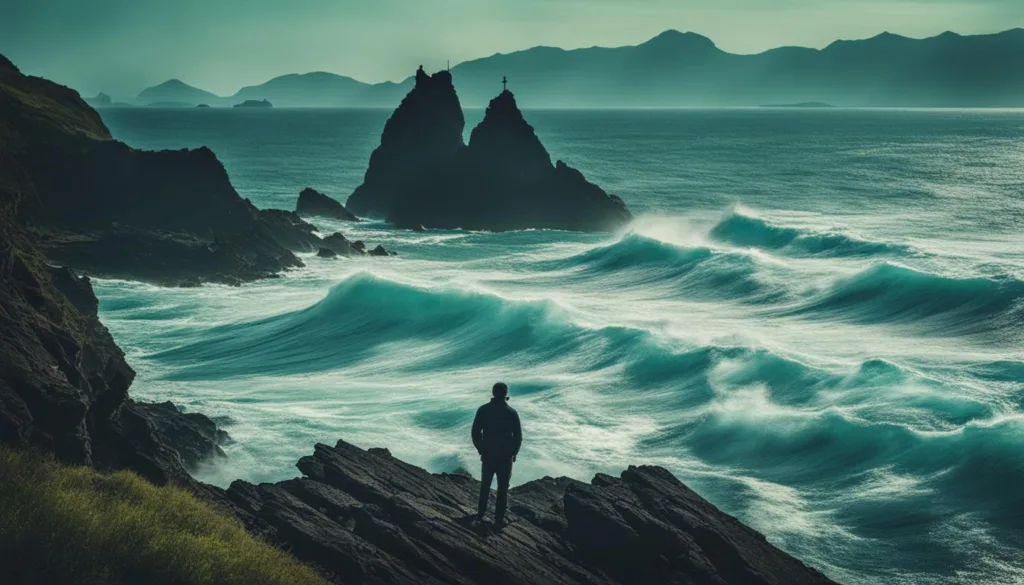
As I delve into the captivating history of Heard Island and McDonald Islands, I am struck by its relatively recent discovery and exploration. These remote and pristine islands were first documented by Captain John Heard in 1854, and since then, they have attracted the curiosity of numerous scientific expeditions and adventurers.
The limited human presence on these islands has been primarily focused on research and exploration. Scientists and researchers from various fields have been drawn to the unique and untouched wilderness of Heard Island and McDonald Islands, conducting studies on the volcanic activity, flora, fauna, and the overall ecological dynamics of this fragile ecosystem.
“The untouched wilderness of Heard Island and McDonald Islands has captivated explorers and scientists alike, offering a chance to unravel the secrets of this remote paradise.”
Explorers who have set foot on these islands have marveled at the raw beauty, rugged terrains, and the awe-inspiring geological features shaped by volcanic activity. Their expeditions have provided valuable insights into the history and natural heritage of this remarkable region.
Explorers who have set foot on these islands have marveled at the raw beauty, rugged terrains, and the awe-inspiring geological features shaped by volcanic activity. Their expeditions have provided valuable insights into the history and natural heritage of this remarkable region.
While the human history of Heard Island and McDonald Islands is still in its infancy, the spirit of exploration and scientific discovery continues to drive our understanding of these enigmatic islands. As we uncover more about their ecological significance and the delicate balance of their ecosystems, it becomes increasingly evident that the preservation of this untouched wilderness is of utmost importance for future generations to cherish and protect.
| Year | Significant Event |
|---|---|
| 1854 | Captain John Heard discovers the islands |
| 1947-1955 | Scientific expeditions conducted by Australia |
| 1980 | Heard Island and McDonald Islands declared a nature reserve |
| 2002 | Designated as a World Heritage Site by UNESCO |
Conservation and Protection Efforts
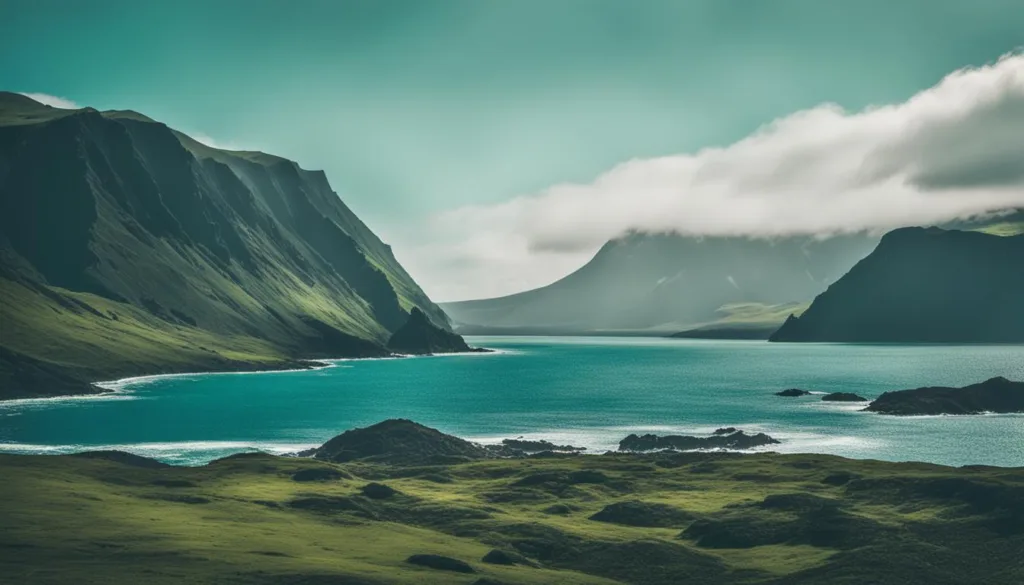
When it comes to the Heard Island and McDonald Islands, conservation and protection efforts are paramount. These remote and pristine islands are home to unique flora and fauna that must be safeguarded for future generations. The Australian government, in collaboration with international organizations, has implemented measures to ensure the preservation of these precious ecosystems.
One of the key conservation initiatives in place is the establishment of marine protected areas around the islands. These protected areas serve as havens for marine life, allowing for the conservation of diverse habitats such as seamounts, underwater canyons, and deep-sea ecosystems. Strict regulations are enforced to minimize human interference and protect the fragile balance of these ecosystems.
Efforts are also focused on mitigating the impact of climate change on the islands. With rising temperatures and changing ocean currents, the delicate ecosystems of Heard Island and McDonald Islands are at risk. Research and monitoring programs are in place to study these effects and develop strategies to address the challenges posed by climate change.
The Importance of Biosecurity
Another crucial aspect of conservation and protection is biosecurity. Due to their isolated location, Heard Island and McDonald Islands are particularly vulnerable to invasive species. Strict biosecurity protocols are in place to prevent the introduction of non-native plants, animals, and diseases that could disrupt the delicate balance of the ecosystems. Visitors to the islands are required to undergo thorough inspections to ensure compliance with these measures.
By prioritizing conservation and protection efforts, Heard Island and McDonald Islands can continue to thrive as untouched wilderness. It is our collective responsibility to preserve these unique ecosystems and ensure that future generations can also experience the awe-inspiring beauty of these remote islands.
| Conservation Initiatives | Biosecurity Measures |
|---|---|
| – Establishment of marine protected areas | – Thorough inspections to prevent the introduction of invasive species |
| – Strict regulations to minimize human interference | – Compliance checks for visitors to ensure adherence to biosecurity protocols |
| – Research and monitoring programs to address the impact of climate change | – Prevention of non-native plants, animals, and diseases |
Tourism and Visitor Information
As an adventurous traveler, exploring the untouched wilderness of Heard Island and McDonald Islands can be an extraordinary and rewarding experience. However, it’s important to note that tourism to these remote islands is limited due to their remote location and strict regulations. To ensure the conservation of the fragile environment, permits and proper planning are required for any visit.
When planning a trip to Heard Island and McDonald Islands, it’s essential to be well-prepared and informed about the logistics. Access to the islands is challenging, with no direct flights available. Most visitors reach the islands via chartered vessels or expedition cruises. These vessels offer onboard accommodations, making them the primary options for staying during your visit.
The best time to visit Heard Island and McDonald Islands is during the summer months of December to February when the weather is milder. However, it’s important to note that weather conditions can be unpredictable, with varying temperatures and strong winds. It’s crucial to be prepared for these changes and to have the appropriate clothing and equipment to ensure your safety and comfort during your visit.
Travel Tips and Safety Guidelines
When visiting Heard Island and McDonald Islands, it’s important to follow safety guidelines and practice responsible tourism. Here are some essential travel tips to keep in mind:
- Respect the fragile environment and adhere to strict guidelines to minimize your impact on the ecosystems.
- Come prepared with proper equipment, clothing, and provisions to ensure a safe and enjoyable experience.
- Follow the instructions of your expedition leaders and guides, as they have extensive knowledge of the area and can help ensure your safety.
- Take extra care when hiking or exploring the rugged terrains, as the landscape can be challenging and potentially hazardous.
- Observe wildlife from a safe distance and do not disturb or feed any animals you encounter.
By following these travel tips and safety guidelines, you can have a memorable and responsible visit to the Heard Island and McDonald Islands, preserving the untouched wilderness for future generations to enjoy.
Getting There and Accommodation Options
When it comes to reaching the remote Heard Island and McDonald Islands, the journey can be quite challenging. As there are no direct flights available, most visitors opt for chartered vessels or expedition cruises to reach these pristine islands. These vessels provide a unique and adventurous experience, allowing travelers to immerse themselves in the breathtaking beauty of the Southern Indian Ocean.
As for accommodation options, visitors to Heard Island and McDonald Islands will find limited choices. Expedition ships that transport travelers to the islands usually offer onboard accommodations. While these accommodations may be modest, they provide all the necessities for a comfortable stay during the expedition.
To ensure a smooth trip, it is advisable to book your expedition well in advance and be prepared for the challenging conditions of the journey. The remote nature of these islands makes it crucial to have proper equipment and provisions to ensure a safe and enjoyable experience.
Recommended Expedition Cruises:
| Expedition Cruise | Duration | Highlights |
|---|---|---|
| Island Explorer | 14 days | Wildlife encounters, hiking, photography |
| Sea Adventurer | 20 days | Volcanic landscapes, scientific research opportunities |
| Ocean Voyager | 10 days | Glimpses of unique marine life, birdwatching |
These expedition cruises offer a range of exciting activities and experiences, allowing visitors to explore the untouched wilderness of Heard Island and McDonald Islands. It’s an opportunity to witness the incredible flora and fauna, hike across rugged terrains, and capture stunning photographs that will be cherished for a lifetime.
Activities and Experiences on Heard Island and McDonald Islands
Visiting Heard Island and McDonald Islands provides a unique opportunity to engage in a range of activities and experiences that showcase the beauty and biodiversity of these remote islands. From thrilling hikes to wildlife encounters, there is something for every nature enthusiast. Here are some of the top activities and experiences to enjoy during your visit:
1. Hiking and Exploration:
Embark on exhilarating hikes to discover the rugged landscapes and breathtaking vistas of Heard Island and McDonald Islands. Traverse volcanic terrains, navigate deep crevasses, and witness stunning glaciers. The trails offer a chance to immerse yourself in the untouched wilderness while enjoying the striking beauty of these remote islands.
2. Wildlife Watching:
Heard Island and McDonald Islands are home to a diverse range of wildlife, including seals, penguins, and seabirds. Take a guided tour or expedition cruise to observe these remarkable creatures in their natural habitat. Witness the mesmerizing displays of courtship rituals, marvel at the agility of penguins as they glide through the water, and capture unforgettable moments with your camera.
3. Photography Opportunities:
With its pristine landscapes and unique wildlife, Heard Island and McDonald Islands offer endless opportunities for photography enthusiasts. Capture awe-inspiring images of volcanic peaks, rugged coastlines, and the mesmerizing interplay of light and shadows. Let your creativity soar as you capture the essence of these untouched wildernesses through your lens.
No matter which activities and experiences you choose, remember to follow responsible tourism practices and adhere to preservation guidelines. By respecting the fragile environment of Heard Island and McDonald Islands, we can ensure that future generations can also enjoy the wonders of these untouched wildernesses.
Table: Wildlife Species Found on Heard Island and McDonald Islands
| Species | Common Name | Status |
|---|---|---|
| Phocarctos hookeri | New Zealand fur seal | Least Concern |
| Aptenodytes patagonicus | King penguin | Near Threatened |
| Diomedea exulans | Wandering albatross | Vulnerable |
| Pycrofta fusca | Macaroni penguin | Least Concern |
| Leptonychotes weddellii | Weddell seal | Least Concern |
Best Time to Visit Heard Island and McDonald Islands
When planning a visit to the remote and untouched wilderness of Heard Island and McDonald Islands, it’s essential to consider the best time to experience these remarkable volcanic islands in the Southern Indian Ocean. The ideal time for a visit is during the summer months of December to February, when the weather is milder, and daylight hours are longer. However, it’s important to note that the weather conditions on the islands can be unpredictable, so it’s crucial to be prepared for varying temperatures, strong winds, and potential changes in plans.
During the summer months, visitors have the opportunity to witness the stunning landscapes of Heard Island and McDonald Islands in full bloom. Vibrant wildflowers blanket the volcanic slopes, creating a colorful and picturesque backdrop against the rugged terrains. The wildlife is also more active during this time, with penguins, seals, and seabirds thriving in their natural habitats.
While the summer months offer the best chance for favorable weather conditions, it’s important to be prepared for the unique challenges that come with visiting such a remote and isolated destination. Strong winds and rapidly changing weather patterns can impact travel plans, making flexibility a key attribute for any visitor. It’s also crucial to bring appropriate clothing and gear to stay comfortable in the often cool and damp conditions of the islands.
Table: Comparison of Seasons on Heard Island and McDonald Islands
| Season | Weather Conditions | Wildlife Activity |
|---|---|---|
| Summer (December to February) | Milder weather, longer daylight hours | Active wildlife, vibrant wildflowers |
| Winter (June to August) | Colder temperatures, shorter daylight hours | Reduced wildlife activity, snowy landscapes |
Ultimately, the best time to visit Heard Island and McDonald Islands depends on individual interests and preferences. Whether it’s witnessing the stunning summer landscapes or experiencing the serene beauty of the winter season, these remote islands offer a unique and unforgettable adventure for those willing to embark on the journey.
Travel Tips and Safety Guidelines
When visiting Heard Island and McDonald Islands, it’s important to be well-prepared and follow safety guidelines to ensure a safe and enjoyable experience in this remote and challenging environment. Here are some travel tips to keep in mind:
1. Plan Ahead and Obtain Permits
Before embarking on your journey to the Heard Island and McDonald Islands, make sure to plan ahead and obtain the necessary permits. These islands are protected areas, and visitors are required to have permits to ensure the conservation of the fragile ecosystem. Contact the appropriate authorities in advance to arrange permits and gather any essential information.
2. Be Prepared for Weather Changes
The weather conditions in Heard Island and McDonald Islands can be unpredictable. It’s essential to be prepared for varying temperatures, strong winds, and potential changes in plans. Dress in layers and pack appropriate clothing to stay warm and dry. Additionally, bring waterproof gear and sturdy footwear to navigate the rugged terrains.
3. Respect the Environment and Wildlife
As you explore the untouched wilderness of Heard Island and McDonald Islands, it’s crucial to respect the environment and wildlife. Stick to designated paths and avoid disturbing the flora and fauna. Keep a safe distance from animals and refrain from feeding them. Remember, you are a visitor in their habitat, and minimizing your impact is vital to preserving their natural behavior and habitat.
By following these travel tips and safety guidelines, you can have a memorable and responsible adventure in the Heard Island and McDonald Islands, while also contributing to the conservation efforts of these pristine islands.
Table: Essential Safety Gear
| Item | Description |
|---|---|
| Waterproof Clothing | Protects against rain, wind, and ocean spray. |
| Sturdy Footwear | Provides traction and support for rugged terrains. |
| First Aid Kit | Includes bandages, antiseptics, and necessary medications. |
| GPS or Navigation Device | Helps with wayfinding and tracking your location. |
| Emergency Communication Device | Allows you to call for help in case of an emergency. |
| Portable Water Filter | Enables you to purify water from natural sources. |
| Headlamp or Flashlight | Provides illumination in low-light conditions. |
| High-Visibility Gear | Increases visibility in foggy or low-visibility situations. |
While this table highlights some essential safety gear, it’s important to assess your specific needs and consult with experienced guides or travel experts for a comprehensive packing list tailored to your trip to Heard Island and McDonald Islands.
Preserving the Untouched Wilderness
Responsible tourism and conservation efforts
Preserving the untouched wilderness of Heard Island and McDonald Islands is essential to maintain the delicate balance of their unique ecosystems. As visitors, it is our responsibility to practice sustainable and responsible tourism to minimize our impact on these pristine islands.
One of the key ways to preserve the untouched wilderness is by following strict guidelines set by the Australian government and international organizations. These guidelines include staying on designated paths, refraining from disturbing wildlife, and ensuring that no debris or waste is left behind.
Additionally, visitors should always respect the fragility of the environment by refraining from removing any natural resources or artifacts. By leaving everything as we found it, we can ensure that future generations will have the opportunity to experience the untouched beauty of Heard Island and McDonald Islands.
Inspiring conservation through education
Educating ourselves and others about the importance of preserving untouched wilderness can have a significant impact on conservation efforts. By raising awareness through various platforms, such as social media, blogs, and community outreach programs, we can encourage more people to prioritize the protection of these fragile ecosystems.
Furthermore, supporting organizations and initiatives that focus on the preservation of Heard Island and McDonald Islands is crucial. Donations and contributions to these conservation efforts can aid in research projects, habitat restoration, and the enforcement of protective measures to ensure the long-term sustainability of these pristine islands.
Collaboration for a sustainable future
Preserving the untouched wilderness of Heard Island and McDonald Islands requires a collaborative effort between governments, organizations, and visitors. By working together, we can establish and enforce strict regulations, implement sustainable tourism practices, and invest in ongoing research and monitoring of the islands’ ecosystems.
Through this collaborative approach, we can create a sustainable future for Heard Island and McDonald Islands, ensuring that their untouched wilderness remains intact for generations to come. Together, we can protect and cherish these extraordinary islands and their unique natural beauty.
| Ways to Preserve the Untouched Wilderness of Heard Island and McDonald Islands |
|---|
| Follow strict guidelines set by the Australian government and international organizations |
| Stay on designated paths and refrain from disturbing wildlife |
| Do not remove any natural resources or artifacts |
| Dispose of waste properly and leave no trace behind |
| Raise awareness about the importance of preservation through education and outreach |
| Support organizations and initiatives focused on conserving Heard Island and McDonald Islands |
| Collaborate with governments, organizations, and visitors to establish and enforce sustainable practices |
Future Outlook and Exploration Opportunities
The future of Heard Island and McDonald Islands holds promising outlooks for both scientific exploration and increased accessibility. As technology advances, researchers and scientists will have more opportunities to study the unique ecosystems and geological features of these remote islands.
Advancements in remote sensing and data collection methods could aid in gathering valuable information about the volcanic activity and changing environmental conditions of the islands. This data can contribute to our understanding of the Earth’s processes and how they influence these pristine environments.
Furthermore, improvements in transportation and logistics may lead to increased accessibility for visitors and researchers alike. This could open up opportunities for expeditions and educational programs, allowing more people to experience the untouched wilderness and contribute to ongoing conservation efforts.
It is crucial, however, that any future developments prioritize the preservation and protection of Heard Island and McDonald Islands. Strict regulations and guidelines must be in place to ensure that any increased exploration or tourism activities do not compromise the fragile ecosystems and unique biodiversity that make these islands so exceptional.
| Future Outlook | Exploration Opportunities |
|---|---|
| Advancements in technology | Opportunities for scientific research |
| Increased accessibility | Expeditions and educational programs |
| Potential for remote sensing | Contribution to understanding Earth’s processes |
| Preservation and protection | Conservation-focused exploration |
Conclusion
As I conclude my exploration of the Heard Island and McDonald Islands, I am left awe-inspired by the untouched wilderness that exists in this remote corner of the Southern Indian Ocean. These islands, classified as a Subantarctic Territory and an Australian External Territory, offer a truly unique experience for adventurous travelers seeking to immerse themselves in the raw beauty of nature.
From the breathtaking landscapes to the diverse flora and fauna, Heard Island and McDonald Islands showcase a pristine environment that is unlike any other. The volcanic activity and geological features have shaped these islands into rugged terrains, deep crevasses, and razor-thin ridges, adding to their allure.
Preserving this untouched wilderness is of utmost importance, and conservation efforts are in place to safeguard the unique ecosystems found here. Responsible tourism practices and following strict guidelines can help minimize our impact on these fragile environments.
In the future, with advancements in technology and accessibility, there may be increased opportunities for scientific research and further exploration of Heard Island and McDonald Islands. The ongoing conservation efforts and our growing understanding of these remote islands will continue to pave the way for a brighter future for this extraordinary destination.
FAQ
What is the location of Heard Island and McDonald Islands?
Heard Island and McDonald Islands are located in the Southern Indian Ocean, approximately 4,100 kilometers southwest of Perth, Australia.
What is the classification of Heard Island and McDonald Islands?
Heard Island and McDonald Islands are classified as a Subantarctic Territory and are considered an Australian External Territory.
What activities can visitors engage in on Heard Island and McDonald Islands?
Visitors can engage in activities such as hiking, wildlife watching, photography, and scientific research to explore the natural wonders and unique wildlife of the islands.
How can visitors reach Heard Island and McDonald Islands?
Most visitors reach the islands via chartered vessels or expedition cruises, as there are no direct flights available to the islands.
What is the best time to visit Heard Island and McDonald Islands?
The best time to visit is during the summer months of December to February when the weather is milder. However, weather conditions can be unpredictable, so it’s important to be prepared for varying temperatures and strong winds.
Are there accommodation options available on Heard Island and McDonald Islands?
Accommodation options on the islands are limited, with expedition ships offering onboard accommodations for visitors.
How can visitors ensure the conservation of the islands?
Visitors should practice responsible tourism, respecting the fragile environment and following strict guidelines to minimize their impact on the ecosystems.

